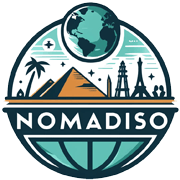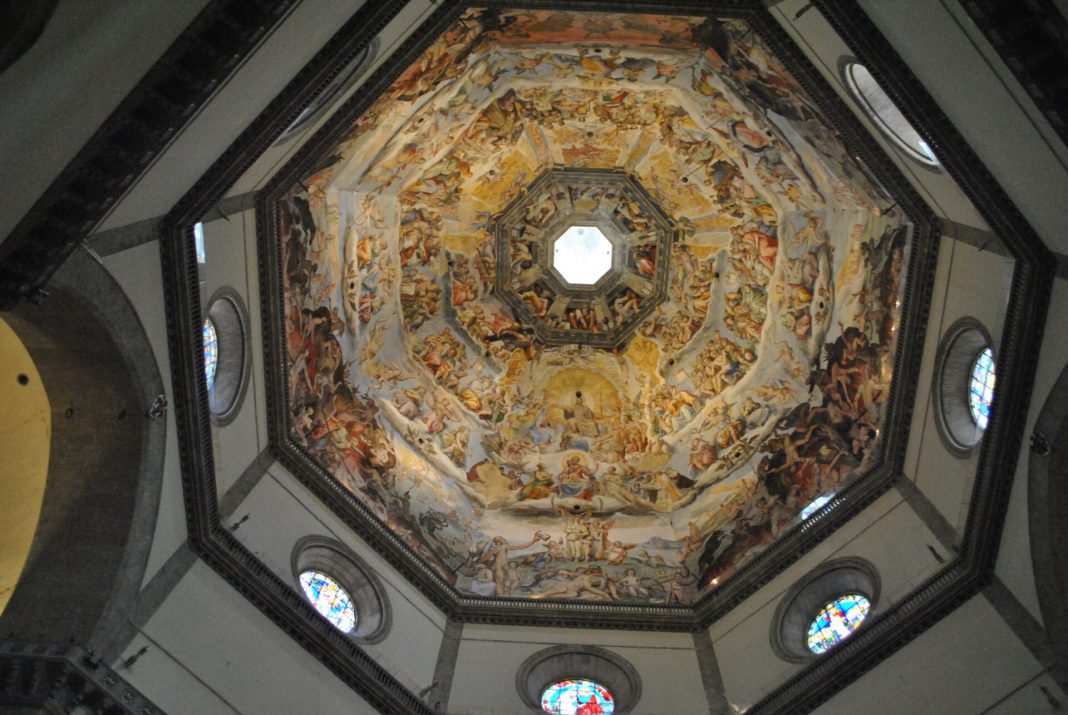We thank our reader Agi for this article. I do not hide that I am an incurable “Italophile,” and therefore I do not refuse any opportunity to visit this amazing country. This time we chose a city break to Pisa-Florence. But I also have a few tips on how to spend a longer time in Tuscany. The quickest way to get to the capital of Tuscany, Florence, is by flying to the nearby Pisa and then taking a bus or train for an hour. Ryanair flies from Budapest to Pisa, while the low-cost airline Eurowings operates from Vienna. The price at the end of February via Eurowings was 80 euros per person, and the flight takes just over an hour.
![]() Check out the attractions from the article on Google Maps
Check out the attractions from the article on Google Maps
Pisa
 Why go to Pisa when we want to get to Florence? The airport in Pisa is bigger than in Florence, it is more busy, probably because it is easier to get to the sea. Last but not least, you have a reason to go see the famous Leaning Tower. Because other than the Piazza del Duomo, where the Tower is located, unfortunately, there is no other reason to visit Pisa. Torre Pendente, as the locals call it, is part of the complex Campo dei Miracoli (Square of Miracles), a beautiful medieval square that withstood the bombing of the city during World War II, and as a result, millions of tourists flock there today. A visit to the square takes maximum an hour, but it is worth it. You need to allocate another hour or two if you decide to visit the lookout in the tower. Tourist crowds can be really long, and everyone must pass through the security check monitored by soldiers. You can reach the “Square of Miracles” from Galileo Galilei Airport or the main train station Pisa Centrale by city transport Lam Rossa “red line”. But if you are coming from the train station, you can comfortably walk there in about 20 minutes.
Why go to Pisa when we want to get to Florence? The airport in Pisa is bigger than in Florence, it is more busy, probably because it is easier to get to the sea. Last but not least, you have a reason to go see the famous Leaning Tower. Because other than the Piazza del Duomo, where the Tower is located, unfortunately, there is no other reason to visit Pisa. Torre Pendente, as the locals call it, is part of the complex Campo dei Miracoli (Square of Miracles), a beautiful medieval square that withstood the bombing of the city during World War II, and as a result, millions of tourists flock there today. A visit to the square takes maximum an hour, but it is worth it. You need to allocate another hour or two if you decide to visit the lookout in the tower. Tourist crowds can be really long, and everyone must pass through the security check monitored by soldiers. You can reach the “Square of Miracles” from Galileo Galilei Airport or the main train station Pisa Centrale by city transport Lam Rossa “red line”. But if you are coming from the train station, you can comfortably walk there in about 20 minutes.
Florence
Although we started the article with a visit to Pisa, we saved its sights for the end of the trip and took a shuttle bus to Florence directly from the airport.Tip: Secure direct transportation from Galileo Galilei Airport in Pisa to the main Santa Maria Novella train station in Florence is provided by Terravision or Autostradale. Both ticket offices, where you can purchase a one-way or return ticket, are located to the right of the airport exit.
The journey takes a little over an hour and a one-way ticket costs up to 10 euros. We arranged accommodation through booking just 10 minutes from SMN station for 110 euros for two people/2 nights with breakfast included. Hotel Soggiorno Oblivium offers cozy, fully refurbished rooms with private bathrooms and everything you need. There is no permanent reception here, so we had to arrange an approximate arrival time with the manager. He explained everything to us, recommended places to visit, gave us a map, and breakfast vouchers for breakfast held at the nearby Ottaviano café. The breakfast was classically Italian, with cappuccino, croissants, and orange juice.
Cultural Tip: In Florence, as well as in the whole of Italy, there is a strong café culture. Cappuccino is only consumed with breakfast until eleven in the morning, after which only “coffee,” what we would call espresso, is drunk. The price for standing at the bar in a café is lower than sitting at a table because locals just go in, drink their coffee standing, exchange a few words, and move on.
Florence and Tuscany in general have historically belonged to the wealthier regions compared to the southern parts of Italy. This also influences the way of dining and the dishes typical for these places. From Rome down south, pasta and pizza are considered traditional dishes, hearty flour-based meals that quickly and affordably satisfy. In Florence, however, the traditional dish is bistecca alla fiorentina (Florentine beef steak) – meaning a proper piece of meat. I have no doubt that locals know how to prepare it excellently everywhere, and we also came across a restaurant through Tripadvisor Trattoria dall Oste, where they served us the steak almost raw on a hot plate, so we could finish it according to our taste. Since we made a reservation through Tripadvisor, we had a 20% discount on the entire bill, which is not insignificant. Highly recommended! In this area, they cultivate and thus also drink red wine Chianti, which perfectly complements the taste of beef. However, if you only feel like a quick lunch/maybe even vegetarian, during a walk literally on the street, there is probably nothing better than tasting focaccia at All’Antico Vinaio. The tiny space in the city center offers filled “sandwiches” with the best available ingredients around. The nice guys preparing the focaccia are happy to advise you on flavor combinations that go great together. The price for this full meal that will satisfy you for hours is 5 euros.
 Florence is not just about food. Here you can find some of the most famous artworks from around the world, sculptures, paintings, architectural wonders of its time. So, what can you manage to see in a short weekend and what not to miss? The center of Florence is relatively small and there is no need to worry about transportation, you can get everywhere on foot. If you wanted to visit all the significant museums and galleries, a weekend will definitely not be enough. Luckily, Florence itself is like one big museum, so even in a short time, you can see a lot just by walking around the exteriors, and therefore for free.
Florence is not just about food. Here you can find some of the most famous artworks from around the world, sculptures, paintings, architectural wonders of its time. So, what can you manage to see in a short weekend and what not to miss? The center of Florence is relatively small and there is no need to worry about transportation, you can get everywhere on foot. If you wanted to visit all the significant museums and galleries, a weekend will definitely not be enough. Luckily, Florence itself is like one big museum, so even in a short time, you can see a lot just by walking around the exteriors, and therefore for free.

Most likely, everyone who visits this city for the first time will head to Piazza del Duomo, where Brunelleschi’s dome of the Duomo and the slender Campanile (bell tower) suddenly appear. The architectural trio is completed on this square by the Battistero, allegedly the oldest building in Florence, where all Florentines were originally baptized. It’s hard to describe the wow-moment that occurs when entering the square. It is a beautiful complex as if ripped from reality and casually placed where space was found. Entrance to the cathedral is free. The view from the bell tower or the dome is subject to a fee, and be prepared for long lines of interested visitors.
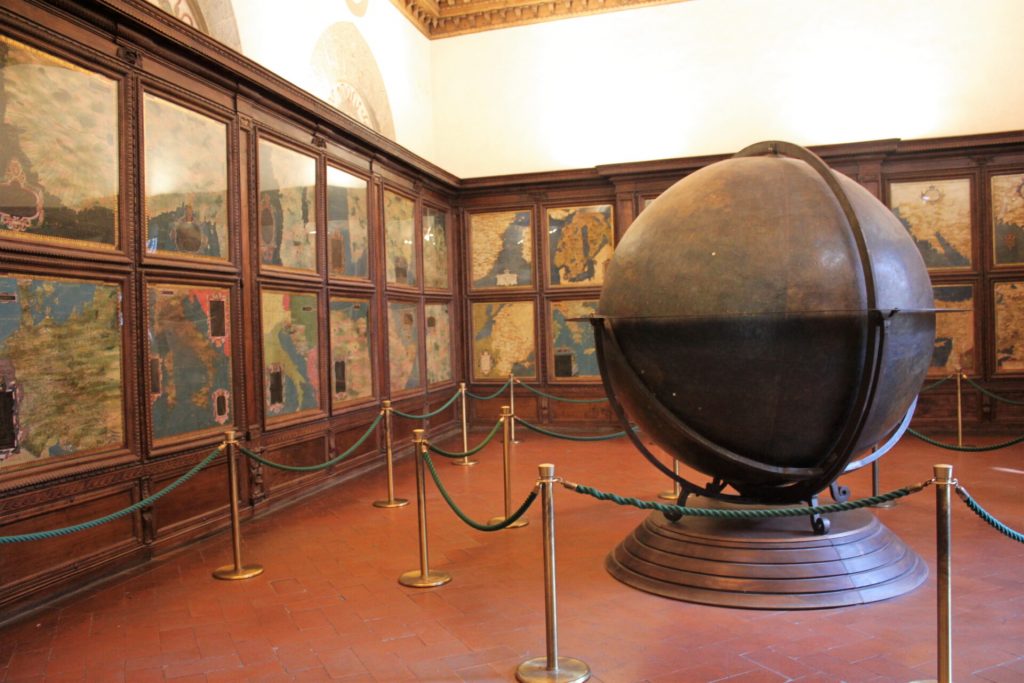 Just a few steps from Piazza del Duomo, across narrow alleyways, you will find Piazza della Signoria (signoria – the governmental authority in medieval Italian city-states). The square is dominated by the town hall Palazzo Vecchio. In front of the entrance, there is a replica of Michelangelo’s David, as well as the Loggia della Signoria – a terrace with several significant sculptures. You can visit the courtyard of Palazzo Vecchio for free and even find a fresco of medieval Bratislava named Pressburg. It is also possible to pay for a visit to the museum and the tower. For a short visit to Florence, I recommend this tower because it is not as crowded as the majestic Duomo. Climbing the 300 steps is truly worth it. As a bonus, there are other interesting sights to see in the Palazzo. Salone dei Cinquecento, also known as the Hall of the Five Hundred, where the Signoria met, the map room, Dante Alighieri’s death mask, etc. The building was renovated by Cosimo I de’ Medici, whose likeness you will often come across in Florence. His family was influential in Florence, dedicated to banking, and he himself had a strong sense of art. Undoubtedly, he did a lot for the splendor of medieval Florence, which still endures today.
Just a few steps from Piazza del Duomo, across narrow alleyways, you will find Piazza della Signoria (signoria – the governmental authority in medieval Italian city-states). The square is dominated by the town hall Palazzo Vecchio. In front of the entrance, there is a replica of Michelangelo’s David, as well as the Loggia della Signoria – a terrace with several significant sculptures. You can visit the courtyard of Palazzo Vecchio for free and even find a fresco of medieval Bratislava named Pressburg. It is also possible to pay for a visit to the museum and the tower. For a short visit to Florence, I recommend this tower because it is not as crowded as the majestic Duomo. Climbing the 300 steps is truly worth it. As a bonus, there are other interesting sights to see in the Palazzo. Salone dei Cinquecento, also known as the Hall of the Five Hundred, where the Signoria met, the map room, Dante Alighieri’s death mask, etc. The building was renovated by Cosimo I de’ Medici, whose likeness you will often come across in Florence. His family was influential in Florence, dedicated to banking, and he himself had a strong sense of art. Undoubtedly, he did a lot for the splendor of medieval Florence, which still endures today.
Almost right next to Palazzo Vecchio is the Uffizi Gallery, hiding a multitude of paintings that belong to the world’s cultural heritage. The very courtyard exudes magnificence with numerous sculptures of artists, medieval scientists, and thinkers. Of course, you will need to allocate some time for the visit. If you decide to visit the gallery, I recommend booking tickets online for a specific time slot.
The Uffizi Gallery is located in the immediate vicinity of the Arno River, and as soon as you pass through its courtyard, you will see the famous Ponte Vecchio, the old bridge, to your right. During World War II, all the bridges in the city were bombed except for this one. It is said that Hitler himself gave the order to spare it. Originally inhabited and worked on by fishermen, due to the unpleasant smell, they were replaced in the past by jewelers and goldsmiths who still offer their goods here today.
Crossing the bridge, you enter a part of Florence called Oltrarno. If you continue straight from the bridge, you will reach the Palazzo Pitti, home to several museums. Exploring the complex requires a considerable amount of time, so during a weekend stay, you might as well enjoy the sunshine directly behind the palace, where you will find the huge Boboli Gardens.Some of the largest Italian gardens. Founded by none other than the aforementioned Cosimo Medici.
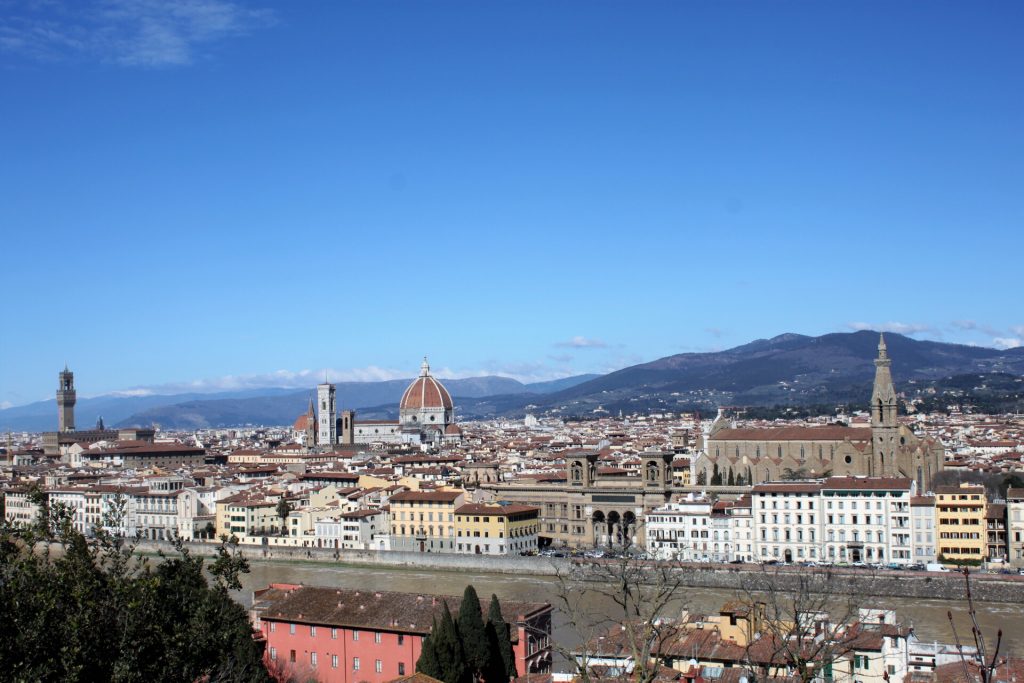
One thing you should definitely not miss in Oltrarno is Piazzale Michelangelo. Of course, the square is dominated by another imitation of David (we will soon get to the original), but it is primarily sought after for its beautiful view of the entire Florence and all its landmarks. From left to right, you will see Ponte Vecchio, Palazzo Vecchio, the Bell Tower, the dome of the Duomo, Santa Croce, and many more. On your way to or from Piazzale Michelangelo, make sure to stop by Via di San Niccolo, a street with many quality food establishments for a meal or just a coffee or glass of wine.
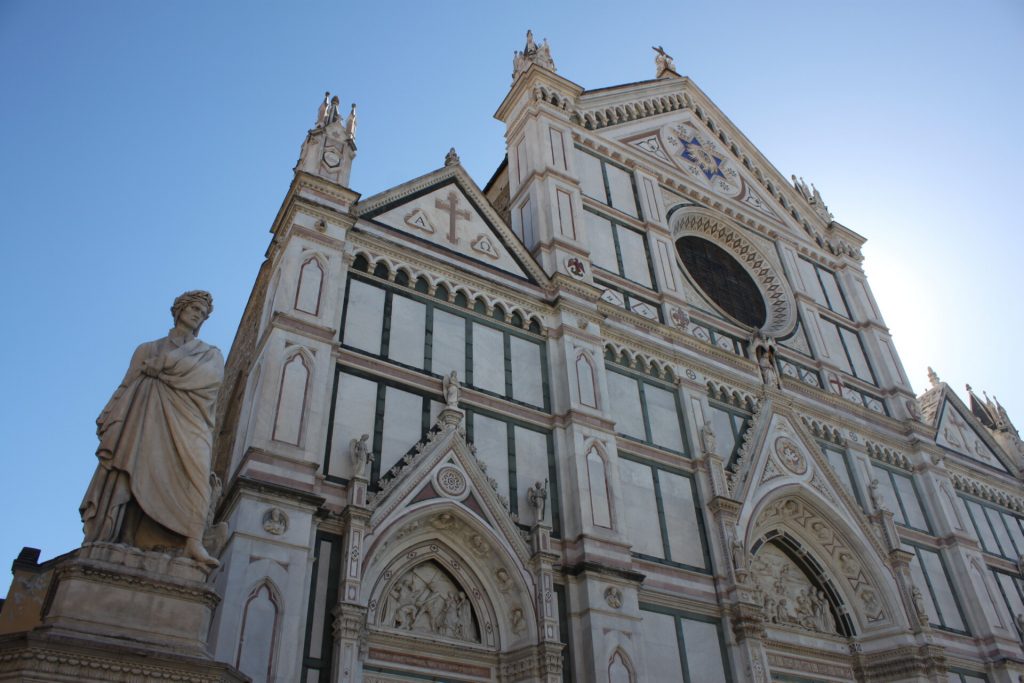 A walking tour of the main highlights in Florence (see map), including coffee and lunch breaks, takes about 6 hours and ends at Santa Croce. The church where Galileo, Michelangelo, and Machiavelli are buried.
A walking tour of the main highlights in Florence (see map), including coffee and lunch breaks, takes about 6 hours and ends at Santa Croce. The church where Galileo, Michelangelo, and Machiavelli are buried.
If your goal in Florence is to see the real Michelangelo’s David, you can find the only original in the northern part of the city at the Galleria dell’Accademia. Just like with the Uffizi, it’s advisable to prepare in advance and buy your ticket online. Whether to visit them on a short weekend trip is really something to consider.
If you decide to explore Tuscany more thoroughly and dedicate a week or two, Florence is a great starting point. From there, you can reach other larger or smaller towns in the area. Siena, Lucca, San Gimignano – these are the most famous towns, with traditional architecture and a unique atmosphere. For the curious traveler, there’s nothing better than renting a car and staying in the Tuscan countryside, which is so picturesque that everyone has to fall in love with it.
In Italy, perhaps the most important thing is – LA DOLCE VITA – the sweet life. The atmosphere of the ancient streets of cities like Florence tells stories that will energize you and fuel your curiosity to learn more. More about what happened in the places you are currently in, and enjoying the dolce vita in your own unique way.
